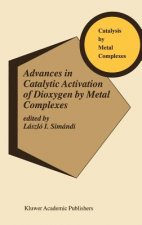
Doručenie
Nákupný poradca





Nehodí sa? Žiadny problém! U nás môžete do 30 dní vrátiť
 Darčekový poukaz
v ľubovoľnej hodnote
Darčekový poukaz
v ľubovoľnej hodnote
S darčekovým poukazom nešliapnete vedľa. Obdarovaný si za darčekový poukaz môže vybrať čokoľvek z našej ponuky.
Delivery and Mixing in the Subsurface
 Angličtina
Angličtina
 156 b
156 b
30 dní na vrátenie tovaru
Mohlo by vás tiež zaujímať


This volume is meant to provide the practitioner with information on the natural mixing processes occurring in aquifers as well as to describe basic strategies that can be implemented to enhance mixing in particular cases. For example, when it comes to mixing miscible liquids, one can speed up mixing in the formation by manipulating the flow such as through the use of recirculation wells. Furthermore, much of the mixing can be achieved partially within recirculation wells themselves, where contaminated water is admixed with additives, volatile products may be removed through a vapor mass exchanger, etc. Thus, adding mixing wells can significantly increase the performance of the delivery and mixing system and speed up the process of remediation.This volume describes the principles of chemical delivery and mixing systems and their design and implementation for effective in situ remediation. The intended audiences include the decision makers, practicing engineers and hydrogeologists who will select, design and operate remedial systems, as well as the researchers seeking to improve the current state of the science and technology. Our hope is that this volume will serve as a useful resource to assist remediation professionals in designing, applying and developing remedial technologies as effectively as possible. §Topics addressed in this volume include:§· An overview of the current state of understanding related to in situ chemical delivery and mixing, including a brief review of some of the remaining challenges and ongoing research.§· A tutorial on the reactions and processes of importance in groundwater remediation. Chapter 2 focuses on chemical and biological processes, while Chapter 3 focuses on transport and mixing.§· A discussion of available hydrogeochmicalmodeling approaches, including a detailed discussion of the travel-time approach to modeling. Protocols for practical implementation for design and monitoring of processes are included.§· Design issues and principles for introducing and mixing chemicals with groundwater contaminants are discussed, including: §Recirculation systems, where mixing is controlled through and takes place mostly in wells is presented. The challenges of operating and maintaining injection-extraction wells, the non-uniform distribution of biomass, plugging issues, and strategies such as pulsing are discussed. Case studies are provided. §The use and design of reactive barriers where contaminants are brought through normal groundwater advection to the reacting chemicals contained within permeable barrier walls through which the groundwater passes are discussed.§Technologies such as air sparging used for introducing and mixing gaseous reactants as well as for removing volatile contaminants are discussed. Ageneral background on processes for mixing of gases is provided along with design issues forair sparging. Case studies are included. §Intrinsic remediation in natural-gradient systems, where the kinetics are controlled through mixing of contaminant plumes with ambient species, such as dissolved oxygen, over long periods of times is covered. Issues including monitoring and estimation of long-term reaction rates, lengths of plumes, and other important parameters are illustrated with case studies.§The special case of source remediation and its challenges are discussed.§Each chapter in this volume has been thoroughly reviewed for technical content by one or more experts in each of the subject areas covered. The editors and chapter authors have produced a well-written and up-to-date treatise that we hope will be a useful reference for those making decisions on remediation of contaminated groundwater and for those involved in research and development of advanced technology for the in situ remediation of groundwater.
Informácie o knihe
 Angličtina
Angličtina




 Ako nakupovať
Ako nakupovať


































